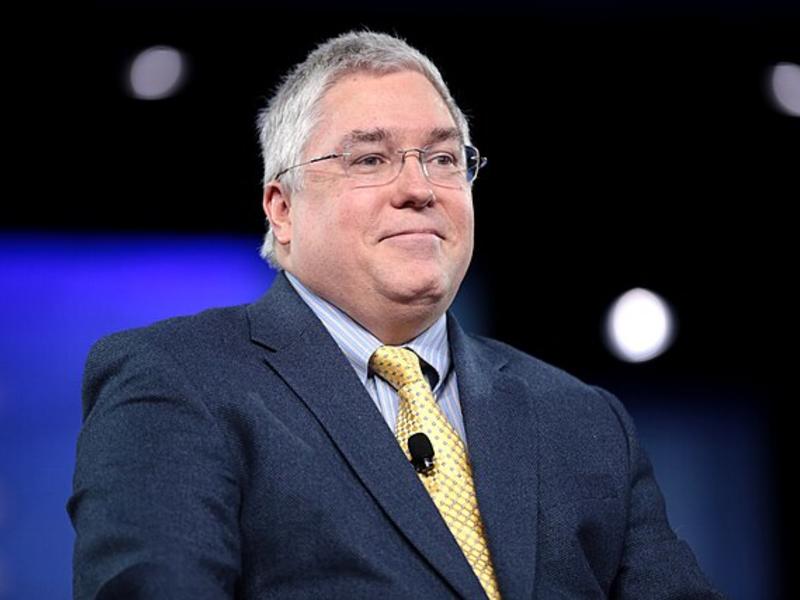
For months, my view has been that President Trump has roughly 35 percent of the electorate locked up; they will be with him come hell or high water. Another 45 percent will be against him no matter what. That leaves 20 percent up for grabs.
We arrive at these numbers by looking at the results of two different poll questions. First, look at the intensity numbers in those polls that ask the president’s job-approval rating. Strong approvers are a pretty good approximation of Trump’s base, while strong disapprovers comprise the hardcore opposition. Then look at polls that ask the “re-elect” question for the incumbent—whether the respondent would definitely vote to reelect Trump, probably vote for him, probably vote against, or definitely vote against. Unfortunately, not all pollsters ask this question and some others only ask it sporadically or in different ways. Yet it serves as a pretty reliable measure.
The latest NBC News/Wall Street Journal poll was released on Sunday. Conducted Aug. 10-14, the poll asked registered voters: “If Donald Trump runs for reelection as the Republican candidate, will you definitely vote for Trump, probably vote for Trump, probably vote for the Democratic candidate or definitely vote for the Democrat?” Twenty-nine percent said that they would definitely vote for Trump, with another 11 percent indicating that they would probably vote for him. Forty-one percent said they would definitely vote for the Democrat, and another 11 percent said they would probably vote for the Democrat.
Since March, the last time the NBC/WSJ poll asked this question, the "definitely" pro-Trump number increased by 2 points, but the definite voters for the Democrat increased by 8 points. Other polls conducted this year pegged the definite-Trump number as low as 28 percent and as high as 39 percent, while the definitely-oppose number ranged from 43 to 56 percent, with some variance in how the question was phrased.
In terms of approval ratings, the NBC/WSJ poll found Trump at 43 percent approval among all adults (29 percent strongly approved, 14 percent somewhat) and 55 percent disapproval (44 percent strongly, 9 percent somewhat).
Last week’s Fox News poll had nearly identical results: 43 percent approved and 56 percent disapproved. Fox did not ask the reelect question this month.
At the time of this writing, NBC and the WSJ had not released trial heats matching Trump up with the better known Democratic candidates, but in the Fox News poll, all four of the potential Trump opponents who were measured ran at least 6 points and as much as 12 points ahead of him. Trump received 39 percent of the vote when matched against Kamala Harris, Bernie Sanders, and Elizabeth Warren. He was one point lower, at 38 percent, when opposed by Joe Biden.
Obviously, it matters who Democrats nominate, but it is far more likely than not that Trump will do better in the Electoral College vote than the popular vote (the GOP vote is more efficiently spread around the states, with fewer "wasted" votes). The popular vote is a good way to see how significant Trump's challenge is. In 2016, while losing the national popular vote by 2.9 million votes (2.1 percentage points), he eked out an Electoral College win by the narrowest of margins, fewer than 78,000 votes spread across three states. So a Democrat might have to win the popular vote by 3 or 3-and-a-half points to be reasonably confident of winning at least 270 electoral votes as well.
A couple of other numbers to consider plugging into your equation: the national generic congressional vote, and next year's voter turnout.
Last year, Democrats won the national congressional vote by 8.6 percentage points, with Democratic candidates on average running 6 points ahead of Hillary Clinton's 2016 performance in their respective districts. Today, the RealClearPolitics average of national polls shows Democrats ahead on the generic congressional ballot by 8 points. It’s reasonable to conclude that the playing field remains tilted in favor of Democrats. (For those skeptical of polling, remember that national polls weren’t far off at all in 2016. The RealClearPolitics average of all of the major national polls had Clinton up by 3 percentage points, so the final, popular-vote result was well within the margin of error.)
Based on the level of interest in the upcoming election, turnout is likely to be very high, perhaps the highest presidential-year turnout in modern history. In 2016, turnout was 60 percent, roughly comparable to the last few election cycles. But last year’s midterms had the highest turnout since 1914. When turnout is very high, the electorate is more likely to resemble the universe of all registered voters. Indeed, last year’s midterm polling was dead on; with the exception of the Florida governor race, general-election upsets in statewide races were hard to come by, and the national popular vote for the House was only six-tenths of a percentage point off of the RCP average of major national polls.
Of course, a lot can and will happen over the next 15 months, and things can certainly change. But at this point, this looks to be an uphill climb for the president’s reelection.
This story was originally published on nationaljournal.com on August 20, 2019
Image Credit: AP Photo/Susan Walsh










Subscribe Today
Our subscribers have first access to individual race pages for each House, Senate and Governors race, which will include race ratings (each race is rated on a seven-point scale) and a narrative analysis pertaining to that race.